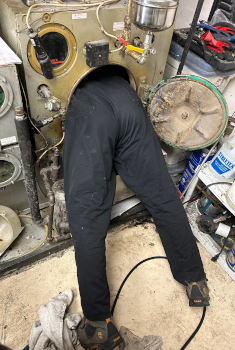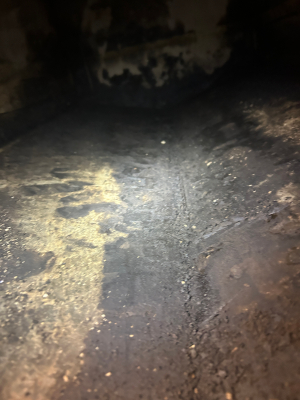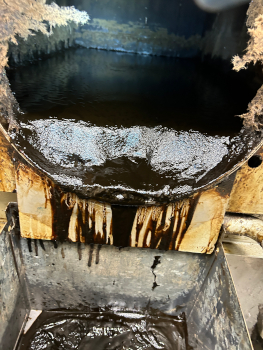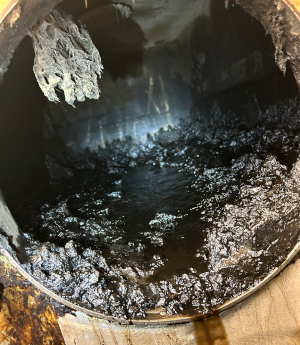Still Cooking After All These Years


Virtually everyone has a still on their dry cleaning machine, and everyone knows how to use it. Right? Well, maybe not, so let’s look into the still and see what’s cooking.
How does it work?
Let’s start with how the still works. Solvent is automatically pumped into the still. The steam heats the solvent until it boils and evaporates – leaving the soil behind. The solvent vapours circulate over a coil filled with water and condense back to liquid. The re-condensed, clean solvent goes back into the solvent tank and is ready to be used again. It is a simple principle but there can be problems.
We are just going to consider perc stills this month – we’ll talk about vacuum stills next month.
Ooops

We recently were called out to look at a still that wasn’t cooking. This perc machine was about 20 years old. The cleaner had been in the business for about 30 years. He said the still had been cleaned a week ago and now it was barely bubbling. The still was reasonably hot but there weren’t many bubbles in it.
We knew it had been cleaned, so there had to be something else wrong. The steam pressure gauge was reading 100 psi (way high). The steam trap was hot and we could see the still was about half full. We checked that the steam valve was opening completely. We changed the pressure gauge to confirm the reading. We checked the steam line strainer. We even checked the condensate line for a blockage. Everything was OK, except there wasn’t any solvent coming back.

We told our customer we needed to come back and have a look inside the still after it cooled down. You can see what we found in these photos. He had scraped some of the liquid sludge out of the still, but there was a layer baked so hard on the floor of the still that it took us 3 hours to scrape it to bare metal (see photo above.)
Common problems
One of the most common problems is a buildup of baked-on sludge on the floor of the still. The scraper from the manufacturer is great for removing liquid sludge, but it is not sharp enough to stop a layer of sludge from building up on the floor. Every few months you need to spend some time scraping the floor, and cleaning the corners and walls of the still.

Proper steam pressure is critical for good distillation. Too little and it doesn’t cook. Too much and the still floor temperature reads hotter than normal and the still shuts off (or the still boils over). An increase in the still bottom temperature is an indication that the solvent is finished cooking and the computer turns the still off.
Another common issue is bad steam traps. That is usually fairly simple to diagnose. The still bottom temperature is low and the steam trap is not very hot.
Water in the solvent can also cause major problems. The still may boil over or you may get a Distillation Water alarm. Water in the solvent causes it to distill much faster and the condensing coil can’t keep up.
The recipe for a properly cooking still

There are a few things you can do to keep your still cooking properly. First of all, clean it weekly. Yes, it is a pain, but a clean still works much better and will give you better solvent mileage.
Clean the window every time you clean the still. When you have a distillation problem, the first thing we do is to look in the window. If we can’t see in, we are just guessing at what is happening inside.
Keep an eye on the still. Just get in the habit of looking in the window when you start the next load. It saves you a lot of grief when you do have problems.
Make sure the steam pressure is set according to the manufacturer’s recommendations for the solvent you are using.
Call back
We had another call about a week later from that same customer. The still wasn’t cooking again. When we looked through the still window we could see a huge mound of lint in the still.
“Where did that come from?” we asked.
“Oh,” the owner said, “I just did the filter maintenance program. I haven’t done it in a while…”
Do I really need to say that stepping up maintenance on one aspect of the machine should be part of an overall plan for the machine? Don’t make me come over and say it to you, too.






